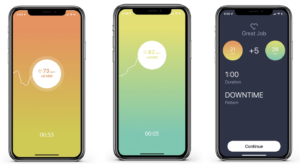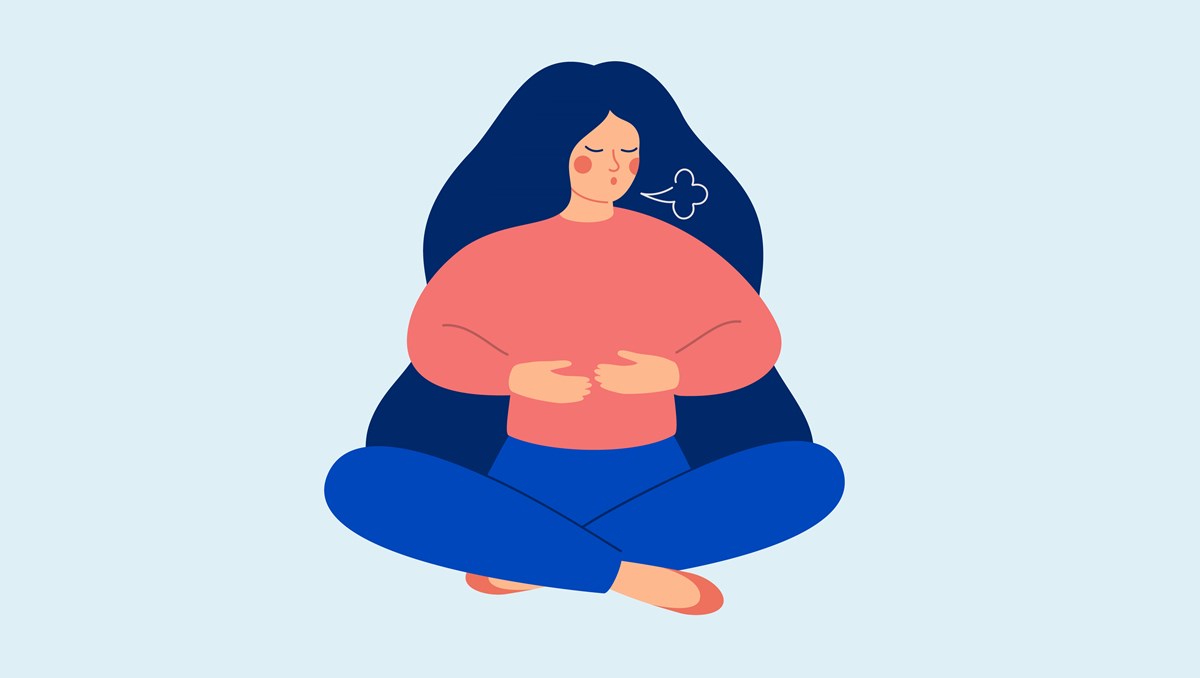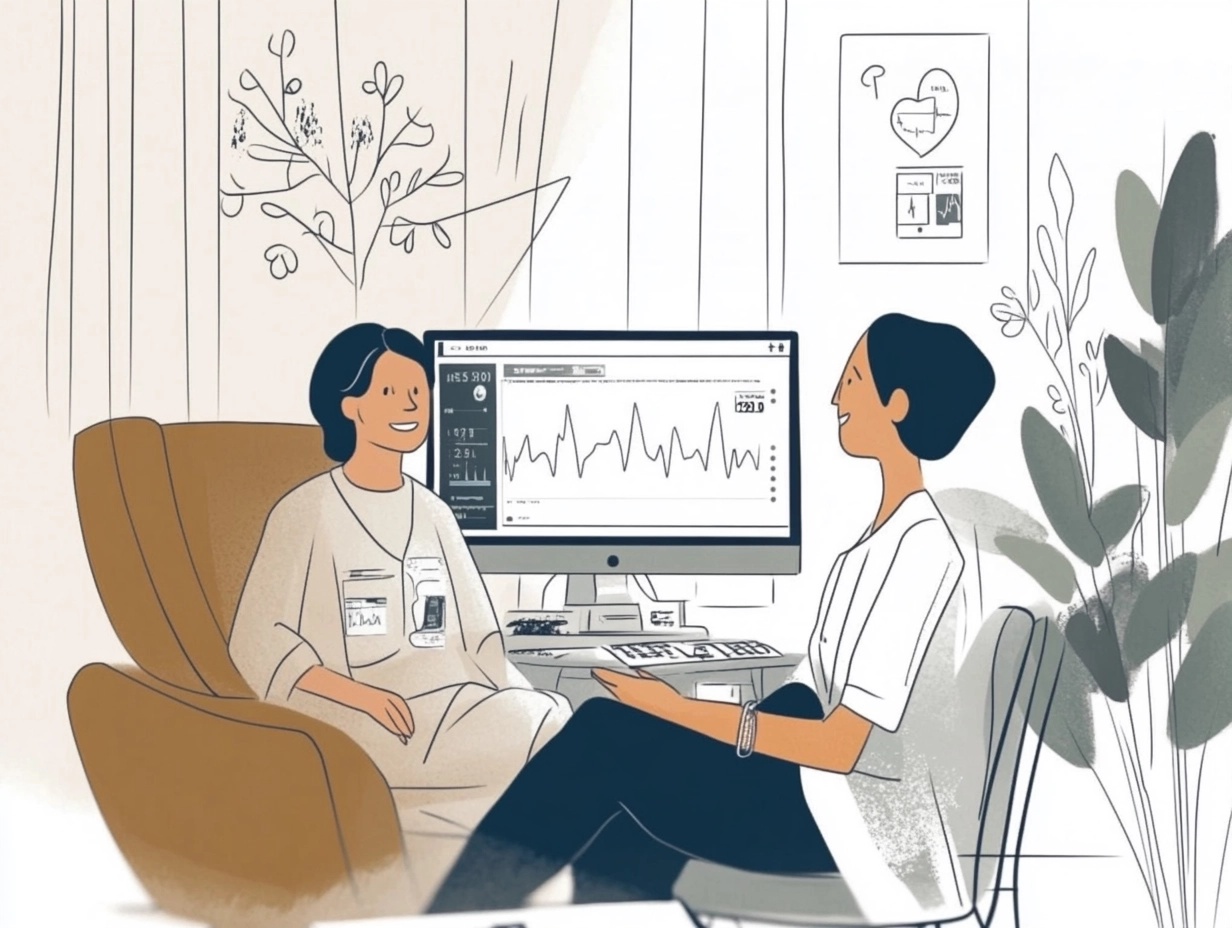What is heart rate variability biofeedback?
Heart rate variability (HRV) biofeedback is a powerful tool for improving emotional regulation skills and increasing self-awareness. By learning how to regulate your heart’s activity with this technique, you can increase your ability to respond to stress in a healthy, mindful way.
HRV biofeedback helps restore vagal tone through slow and deep breathing exercises that sync heart rate with respiration. This helps activate vagal pathways that counteract the flight-or-fight stress response. As a result, it lowers defenses, relaxes the body, slows heart rate, encourages feelings of centeredness and calm, and improves decision-making abilities.

How do you practice HRV biofeedback?
The first step in HRV biofeedback is to take a baseline HRV measurement with a clinical grade HRV wearable like Lief. This will give you a reference of your HRV range, including what HRV is typically lower versus higher for you. After taking the initial measurement, you’ll be able to start tracking changes over time by noticing your HRV during different activities, as well as during times of stress or relaxation.
Then, you can begin using techniques to regulate your heart’s activity during times of stress. These techniques include deep breathing, progressive muscle relaxation, guided imagery, and other forms of meditation or mindfulness. With practice, you’ll be able to identify when your HRV decreases due to emotional or physical stressors, and use techniques like HRV biofeedback to help you recover back to baseline.
How does HRV biofeedback with Lief work?
Lief’s HRV biofeedback exercise is called Downtime. This biofeedback practice is trying to help sync your heart rate and your breath rhythm (a.k.a. create respiratory sinus arrhythmia), which helps stimulate vagal tone, which then activates your nervous system’s parasympathetic “rest and digest” mode.
The Downtime begins when you self-initiate it, or when your HRV has dropped below the lower bound of your threshold settings (a.k.a. autodoses). The device starts vibrating when it senses that your heart rate is dropping. When your heart rate begins accelerating again, the algorithm turns the vibration off.
Our heart rate naturally accelerates when we breathe in, and decelerates as we breathe out. The bigger the difference in our heart rate when we inhale versus exhale, the higher the vagal tone.
When your device is vibrating, that’s your cue to begin exhaling because your heart rate is decelerating at that moment. Since your heart rate decelerates on the exhale, when you exhale for as long as you have air left, you’re helping to create greater peak-valley difference between your heart’s BPM at the top of your inhale vs. the bottom of your exhale.
Higher vagal tone, reflected in higher heart rate variability, means the body is in a more optimal state to recover quickly from stressors
How should you engage in Downtime practice with Lief?
More important than following the vibrations to a T, you should inhale at your own pace, and then wait for the device to vibrate to cue your exhale. Exhale longer, past the vibration, if you feel like you can. When you’re done with your exhale, start your inhale again without pausing.
When you reach the top of your inhale, if your Lief hasn’t started vibrating yet, pause and hold your breath until the vibration cues you to exhale slowly. Seeing your heart rate turn into a wave pattern with high amplitude is a sign that you’re doing the exercise correctly.
When the Downtime begins, wait for the first long vibration to pass (this is your cue that the exercise is beginning). Then, inhale to about 80% full, and hold your breath at the top until the vibration begins.
For the rest of the exercise, use the vibration to guide the beginning of your exhale. Exhale along with the vibration, as if you’re breathing out through a straw. Even if the vibration pauses, if you still have air left to get rid of, keep going with your exhale.
Then, when you’re completely out of air, immediately begin your inhale again. Fill your lungs about 80% full of air on your inhale (you don’t want to go 100% bc that could make you feel light headed). Then hold your breath at the top if the vibration hasn’t started yet. Once it begins, exhale once more.

The 3 key points to remember when learning how to do HRV biofeedback with Lief:
- Always start a Downtime with an inhale
- The beginning of the vibration cues the beginning of your exhale
- Exhale for as long as you have air left, even if it’s past the end of the vibration
If you’re observing the app screen while doing your Downtime, you’ll notice a wave pattern forming. We want this wave to have high amplitude and be as smooth as possible.
The Lief’s vibration is responding to your heart rate in an effort to sync it with your breath. Thus, in that sense you are controlling the vibration rather than just following it, which is why it may take a few breathing cycles to get in sync.
HRV biofeedback practice (a.k.a Downtime) tips with Lief
For many people, a 4 second inhale and 6 second exhale can be effective. This is not an absolute rhythm – see what type of elongated breath works best for you!
No marathon breathing, try medium-sized breaths.
Focus on “diaphragmatic breathing”, inhaling so the stomach goes out, without the shoulders going up.
Try not to engage additional muscles during breathing cycle, such as the abs, chest, or shoulders.
Keep your attention in the present moment. This is an ongoing process. As you become aware of your mind wandering to the future or reflecting on the past, bring your focus back to the breath.
Your posture can be very impactful; try sitting in an upright, alert, but relaxed position, dropping the shoulders slightly back and down.
It can be helpful to inhale slowly through the nose, and exhale through the mouth, with your lips slightly pursed to engage in “straw” breathing and control the flow of air.
No counting, no overthinking, just pay attention to the vibration to cue your exhales, and think “effortless breathing.”
As a challenge, try to turn off your autodose with just a few inhale/exhales. You’ll be able to tell if you’re syncing your heart rate with your breath by observing the wave forming at the top of the app’s dosing screen.
You should see smooth waves with high amplitude, as well as your HRV number increasing and color zones changing from red and yellow to green and blue, if you’re following the exercise correctly.






Leave a Reply
You must be logged in to post a comment.